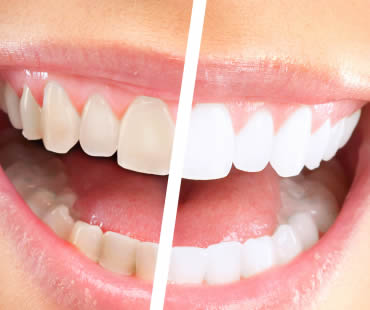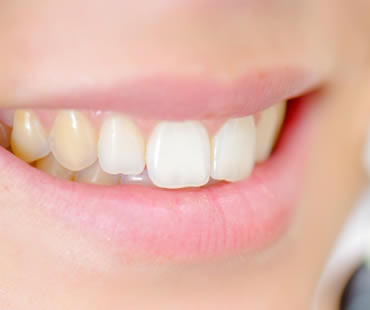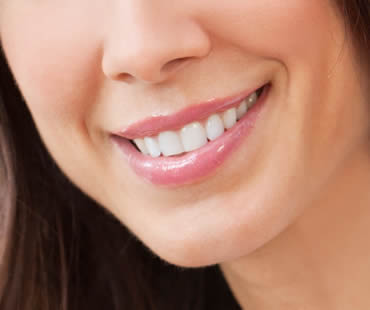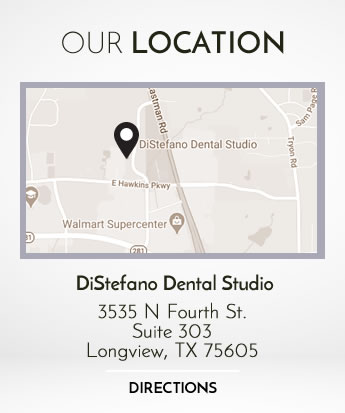
Some of the main reasons many people don’t like to visit the dentist is due to the pain involved with some procedures, or simply the fear of the experience. That’s why dentistry has come up with a way to provide people with dental care, but relieving those common reasons for avoiding it. Sedation dentistry allows patients to have dental work without feeling pain or experiencing anxiety.
Process
Sedation dentistry uses sedative drugs in a safe way for patients to be calmed during dental procedures. You are not fully put to sleep, but the effects of the sedative can make you feel sleepy and it’s likely you won’t remember much about your dental work. It is formally regulated, and side effects are uncommon. Your dentist adjusts the amount of medication used to meet the needs of each patient. There are even choices about the sedation technique used. In the past, intravenous sedation delivered by injection was the most common. Today, alternatives like inhaling nitrous oxide and other approaches that don’t require needles are possible. Your dentist can discuss your options and help you decide which is best for you.
Pain management
Many patients are interested in sedation dentistry so that the pain felt during dental procedures is reduced. This is more than just numbing the area to be worked on; you can actually be put to sleep so you do not feel anything at all. Sedation dentistry is often recommended for sensitive procedures that have greater pain associated with them.
Relaxation
Another popular reason for sedation techniques is to relax the patient. This calms you during the procedure so that the dental work can be performed without increased risk of injury or avoidance. A common level of sedation for this purpose is called the twilight stage, which allows you to respond to the dentist but your awareness of the procedure itself is limited. This allows many patients to get through dental procedures much more comfortably as opposed to when fully awake and alert.
If you live in the Longview area contact us today

Sedation dentistry allows patients with dental anxiety to undergo procedures painlessly and without fear. While dental sedation is considered extremely safe, any time a patient is undergoing anesthesia there are risks associated with the procedure. The first and most important step in ensuring the safety of dental sedation is to find a qualified and appropriately trained sedation dentist. It’s important to ask how many sedation procedures your dentist has performed, as well as they type of training they have received.
Once you have identified an experienced sedation dentist, they will determine if you are a suitable candidate for sedation. Patients who are obese or have other conditions such as obstructive sleep apnea are more prone to complications from anesthesia and may not be viable candidates for sedation. Your sedation dentist should review your general health and medical history to determine if you are at a higher risk for complications while under sedation.
Discuss with your dental professional the type and amount of sedation you will be receiving. Your sedation dentist should provide you with information about the risks of the procedure, and be available to answer any questions or concerns you have about the planned sedation. Finally, your vital signs should be monitored during sedation, and your dentist should have oxygen and drugs that reverse the sedation effects available during the procedure.
When properly administered by an experienced sedation dentist, dental sedation can be a safe and effective tool for managing your dental anxiety. Sedation dentistry allows you to receive the oral healthcare you need without pain or undue stress.
If you are considering sedation dentistry in Longview, contact our office today to schedule a consultation.

Nobody is happy with yellow or brown teeth. Ugly stains from smoking or consuming foods and drinks prone to discoloring your teeth can make you a good candidate for teeth whitening. There are many techniques available to restore your bright smile. The main two categories of teeth whitening are either at-home kits or professional treatment in a dental office. Let’s learn about these to see which you’d like to use to brighten your smile.
At-home teeth whitening
There are a variety of products you can try yourself to whiten your teeth. These treatments usually take a few weeks of use before your teeth are noticeably whiter. Also remember that most of these products cannot achieve as high of a level of whiteness as those performed professionally.
- Kits – whitening kits contain a tooth mold and gel to place inside the mold. You wear the filled mold for about 30 minutes for 2-3 weeks.
- Strips – thin whitening strips are coated with peroxide gel, and then you apply the strips directly to your teeth for 30 minutes for 14 days. Results become evident in a few days and last about four months.
- Toothpaste – brushing with whitening toothpaste must be done consistently and you must be patient because reaching the desired outcome usually takes a couple of months.
Professional teeth whitening
Treatments done by a dentist are the fastest and most effective way to regain your pearly whites.
- Laser whitening – the dentist coats your teeth with a hydrogen peroxide solution and then shines a laser light on them. This oxidizes the stains and gives them a whiter appearance.
- Porcelain veneers – if your teeth are severely stained and other whitening techniques haven’t done the trick, your dentist may recommend porcelain veneers. These shells permanently cover your teeth and provide a beautiful smile.
Teeth Whitening dentist in Longview

It can be rather upsetting to see that your smile is no longer as bright and appealing as it used to. Most people’s teeth become stained and discolored and result of diet and poor oral hygiene habits. It can make the whole appearance look dull and unkempt, giving others the impression you don’t take good care of yourself. Let’s find out the causes and what you can do about it.
Causes
There are some reasons that teeth become stained or yellowed. The culprits for tooth discoloration are as follows:
- Tobacco – Smoking or chewing on them stains teeth.
- Foods and drinks – coffee, colas, wines, tea, berries, sauces, and other items that you consume can damage your tooth color.
- Medications – certain medications are known to discolor teeth, sometimes causing severe stains that are difficult to remove.
- Poor oral hygiene – improper brushing and flossing is key in removing plaque and stains.
- Age – aging wears away tooth enamel and reveals the yellowish dentin underneath.
- Disease – some diseases can harm tooth enamel and trigger discoloration. Certain medical treatments like radiation and chemotherapy can also discolor teeth.
- Environment – excessive fluoride exposure can stain teeth; this is known as fluorosis.
- Genetics – some people are more prone to tooth discoloration than others.
- Trauma – a hit to the maxillofacial region can damage the tooth and cause discoloration due to pulp necrosis.
Prevention
Lifestyle changes can prevent tooth discoloration, such as avoiding foods and drinks known to stain teeth. Improving oral hygiene is another step in the right direction, including regular brushing and flossing and consistent professional teeth cleanings.
Treatment
The options vary depending on the severity of discoloration and goals of the patient. Whitening methods include over-the-counter whitening products, at-home whitening kits provided by the dentist, professional in-office whitening treatments, bonding, and dental veneers. These tools cater for various needs according to patient’s concern.
We treat patients from Longview and the surrounding area
A beautifully white smile is often perceived as a sign of youth and vitality, but over time it can gradually fade. Eating certain foods or drinking dark-colored beverages, taking particular medications and simply aging can all take its toll on your teeth. It’s hardly surprising that tooth whitening has become one of the most popular cosmetic dental procedures in recent years. Professional teeth whitening is safe and effective and can quickly rejuvenate your smile. If you’re thinking about whitening your teeth, there are several options to choose from which include:
In-Office Whitening
In-office teeth whitening is hugely popular, as you can literally book a lunch time appointment and leave with a dazzling white smile. Surface stains can quickly be eliminated, and teeth can be brightened by up to eight shades in just an hour. This option is the most expensive, and you don’t have much control over the final results. Your dentist in Longview will activate the bleaching gel with a special light so the final result should be a stunning white smile.
Custom-Made Take-Home Teeth Whitening Kits
Not everyone wants to whiten their teeth so quickly, and custom-made whitening trays enable you to safely bleach teeth in a more controlled manner. Your Longview cosmetic dentist will take impressions of your teeth that are used to fabricate custom-made whitening trays. You’ll be shown how to use these trays, and should wear them for as long as directed. Most people will begin to notice real results within a few days, but they generally need to be used for two or three weeks to achieve optimum effects.
Over-The-Counter Teeth Whitening Kits
Over-the-counter whitening kits come in the form of trays and whitening strips and can cost between $20 and $50 so it’s tempting to think they will save you money. However the bleaching gels contained in these kits are not as strong as those available to your dentist. In addition, there’s the possibility these kits could irritate your gums as ill-fitting whitening trays can allow the gel to leak out.
We look forward to seeing you in our Longview dental office

Having a bright, beautiful, white smile is something we all desire. It signals health and prosperity and leaves the best possible first impression a person can make. There are a host of products at the drug store that label themselves “whitening.” Whitening toothpastes, whitening mouth rinses, whitening strips, gels and creams all line the shelves, promising a “new you!” Your dentist, however, offers something labeled as “bleaching.” So what’s the difference? Which should you choose?
Your natural tooth is made up of two specific layers: enamel and dentin. The enamel layer is on the outside of the tooth. It’s the white part we see when someone smiles. It’s hard and heavily mineralized and can appear like porcelain. The dentin is the inner layer. It’s yellow in color and supports the enamel on the outside. Over time, your enamel naturally wears away and the yellow dentin color can begin to show through.
The term “whitening” is applied to any product that helps restore teeth to a natural color by removing debris and stains from a natural tooth’s surface. Any substance that restores the surface of a tooth’s enamel is a whitening product. Many whitening products contain a mild abrasive that removes leftover discoloration and food particles, leaving the enamel of the tooth smooth and white. Teeth whitening products combat stains caused by ageing and the discoloration left by many foods, or by smoking.
The FDA permits the term “bleaching” only for products that can whiten a tooth beyond their initial, natural color. Bleaching products contain active ingredients such as carbamide peroxide or hydrogen peroxide. The peroxide is activated so that it releases oxygen molecules that enter the tooth enamel and break down stains in a way that whitening products cannot. This activation can occur immediately, in the case of some in-office bleaching products, like laser whitening, or it can take several hours, as it can with custom take-home bleaching trays.
If you are considering brightening your smile, talk to Longview teeth whitening dentist Dr. DiStefano to see what product is best suited to your smile needs!
We look forward to seeing you in our Longview dental office








